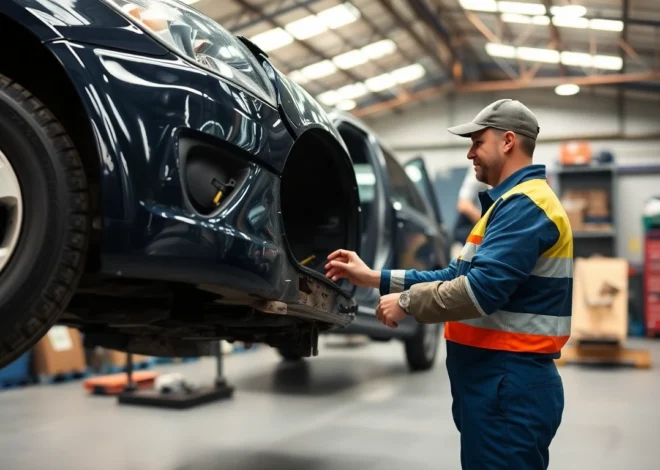
How the Truckers Voice Shapes the Future of Freight and Industry Policies
Understanding the Significance of the Truckers Voice in the Industry
The trucking industry is a cornerstone of global commerce, responsible for transporting approximately 70% of freight within the United States alone. Despite its critical role, truck drivers have historically faced challenges such as long hours, regulatory burdens, and safety concerns, often feeling underrepresented in decision-making processes that directly affect their work and well-being. Recognizing these issues, the truckers voice has become an essential catalyst in shaping policies, safety standards, and working conditions. By amplifying driver feedback and advocacy, the industry moves toward a more equitable and efficient future where drivers’ insights lead to meaningful reforms.
Role of Driver Feedback in Shaping Trucking Policies
Driver feedback is fundamental in refining regulations that impact daily operations. Policies regarding hours of service, safety protocols, and equipment standards often originate from industry stakeholders but may overlook on-the-ground realities. When drivers actively share their experiences, challenges, and suggestions, regulatory bodies gain a more accurate understanding of the industry’s needs. For example, collaborative efforts between drivers and policymakers have led to adjustments in hours-of-service rules, balancing safety with operational efficiency. Such feedback loops ensure that policies are not only well-informed but also practical and sustainable.
Historical Evolution of Truckers Voice and Advocacy
The evolution of the truckers voice reflects a broader movement toward driver empowerment and industry reform. In the early 20th century, truck drivers operated largely as independent contractors with minimal organized representation. Over time, driver associations and labor unions emerged, advocating for better wages, safety conditions, and legal protections. The advent of digital communication tools in recent decades has exponentially increased advocacy capacity, enabling drivers to organize, share experiences, and influence policy at both local and national levels. Movements such as the CVSA (Commercial Vehicle Safety Alliance) and online driver communities exemplify how collective voice has galvanized change over the years.
Impact on Safety Standards and Working Conditions
Enhancing safety standards and improving working conditions are direct outcomes of an active truckers voice. When drivers report hazards, unsafe practices, or ergonomic issues, these concerns prompt regulatory agencies and fleet operators to implement targeted improvements. Data from driver complaints often lead to technological innovations, such as advanced safety systems, better rest areas, and ergonomic truck designs. This collaborative approach not only minimizes accidents but also fosters a more sustainable and driver-friendly industry environment.
Strategies to Amplify the Truckers Voice Effectively
Utilizing Digital Platforms for Advocacy and Community Building
Digital platforms have revolutionized how drivers communicate and advocate. Social media, online forums, and dedicated apps allow drivers to share experiences, mobilize support, and campaign for policy changes swiftly. Platforms like Facebook groups or Reddit communities provide safe spaces for discussion and collective action. Additionally, websites and apps designed specifically for trucking communities enable anonymous feedback, resource sharing, and direct engagement with advocacy groups. By leveraging these tools, drivers can amplify their concerns beyond isolated incidents and build a united front for industry reform.
Engaging with Industry Stakeholders and Regulators
Active engagement with industry stakeholders—including fleet managers, insurance providers, and regulatory agencies—enhances the effectiveness of driver advocacy. Formal channels such as public hearings, industry conferences, and consultative panels facilitate direct dialogue. Drivers and advocacy organizations are increasingly participating in these forums to influence policy decisions, push for safer working conditions, and advocate for technological advancements. Building relationships with stakeholders ensures that drivers’ voices are not only heard but also integrated into policymaking processes.
Creating Impactful Feedback Mechanisms and Surveys
Structured feedback tools, such as surveys and focus groups, are critical for collecting meaningful driver input. Well-designed questionnaires can uncover systemic issues, measure satisfaction levels, and track industry improvements over time. Digital surveys can be distributed easily via mobile apps or email, encouraging widespread participation. Effective feedback mechanisms also include regular town hall meetings and anonymous reporting channels to capture honest, unfiltered driver insights. These data sources enable industry leaders to prioritize initiatives that address driver needs and improve overall safety and job satisfaction.
Tools and Technologies Empowering Truckers to be Heard
Mobile Apps and Social Media for Real-Time Communication
Mobile technology has become indispensable for modern truckers. Apps like Fleet management tools, navigation aids, and safety alerts allow drivers to communicate instantly with dispatchers, fellow drivers, and advocacy groups. Social media platforms serve as dynamic spaces for sharing real-time experiences, raising awareness, and organizing campaigns. These tools facilitate rapid response to issues such as road hazards, regulatory changes, or safety incidents, empowering drivers to take action and influence their work environment directly.
Data Collection and Reporting Tools for Driver Concerns
Data-driven advocacy relies heavily on accurate and comprehensive reporting. Digital tools enable drivers to record issues related to maintenance, safety breaches, or ergonomic problems efficiently. Platforms that aggregate these reports help fleet managers and regulators identify trends and prioritize interventions. For instance, electronic logbooks, incident reporting apps, and online analytics dashboards provide transparent insights, fostering accountability and continuous improvement.
Emerging Trends in Digital Advocacy and Organizing
Emerging trends include the use of AI-powered chatbots for instant support and feedback, blockchain-based systems for transparent reporting, and virtual reality training platforms that incorporate driver input to enhance safety. Additionally, online grassroots campaigns and Crowdsourcing platforms are expanding driver influence beyond traditional lobbying efforts. As technology advances, the truckers voice will become more sophisticated, inclusive, and effective in shaping industry practices.
Case Studies: Success Stories Driven by the Truckers Voice
Major Policy Changes Influenced by Driver Coalitions
A notable example is the push for Hours of Service reform by driver coalitions that highlighted fatigue-related safety risks. Collective advocacy resulted in extended rest periods and electronic logging device regulations that favor driver well-being. These changes demonstrate how unified driver voices can lead to substantial regulatory adjustments that enhance safety and operational flexibility.
Community-Led Initiatives Improving Driver Safety
Community-led safety initiatives, such as local driver safety patrols and peer mentoring programs, have proven effective in lowering accident rates and fostering camaraderie. These grassroots efforts often originate from driver groups utilizing online platforms to coordinate activities, share best practices, and advocate for better infrastructure, like truck parking and rest stops.
Innovations in Trucking Safety and Operations from Driver Feedback
Feedback from drivers has driven innovations such as collision avoidance systems, fatigue monitoring technology, and ergonomic truck cabins. These advancements not only mitigate risks but also improve driver satisfaction, illustrating how technology and advocacy intertwine to create tangible industry improvements.
Measuring the Impact and Future Outlook of the Truckers Voice
Key Metrics to Evaluate Advocacy Success
Metrics such as policy changes influenced, incident report reductions, driver satisfaction scores, and participation rates in advocacy initiatives serve as benchmarks for success. Tracking these indicators provides tangible proof of the truckers voice’s effectiveness.
Challenges and Opportunities Ahead for Drivers’ Advocacy
While digital tools and advocacy networks expand, challenges persist, including industry fragmentation, regulatory barriers, and digital literacy gaps. However, ongoing innovations and increased awareness within the industry present opportunities for drivers to further unify and strengthen their influence.
How Technology Will Shape the Truckers Voice in the Coming Years
Future technologies like AI, IoT, and big data analytics will enable more precise, scalable, and real-time advocacy. Virtual reality simulations and blockchain systems will enhance transparency and driver engagement, ensuring the truckers voice remains a powerful force in shaping a safer, more sustainable industry.


